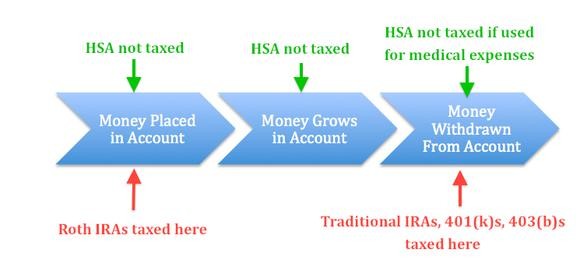Retirement Savings Accounts Know The Rules
Post on: 16 Март, 2015 No Comment

In this article
- Tax considerations Distributions Rollovers Transfers
Your retirement savings plan offers you several choices when you change jobs or retire. This report explains the distribution options you can choose from in deciding how you want the money in your plan treated.
What Is A Distribution?
A distribution is simply defined as a payout of the amount of money that has accumulated in your retirement savings plan. This may include amounts you have contributed, the vested portion of any amounts your employer has contributed, plus any earnings from investments in the plan.
You will want to think carefully before making any decisions about the money in your retirement plan, as some choices may mean you have to pay income taxes and/or income tax penalties on your distribution. It’s also a good idea to talk with a tax advisor before picking a distribution election.
Three Distribution Options
1. Keep Your Money In The Plan
You can leave your savings in your employer’s retirement savings plan if your account balance was more than $5,000 at any time, depending on your plan’s rules. Minimum distributions generally must begin when you reach age 70½ or when you retire, whichever comes later (an individual who is 5% owner of the plan’s sponsor must begin withdrawals at age 70½ even if he or she has not yet retired.)
Advantages: You’ll continue to enjoy tax-deferred compounding of any investment earnings and receive regular financial account statements and performance reports as long as your money remains in the plan.
Although you will no longer be allowed to contribute to the plan, you may have control over how your money is invested among the plan’s investment options. You also may still be able to obtain information from the professionals who manage and administer your account.
If you’re retiring, you might choose this option if your spouse is still working or if you have other sources of retirement income (such as taxable investment income). If you’re starting your own business when you leave the company, keeping your retirement money in your company’s plan may help protect your retirement assets from creditors, should your new venture run into unforeseen trouble.
Example. Sue, 58, is retiring from her full-time job. Her husband is retiring and the family receives his pension and Social Security benefits, which will cover most of their current living expenses. Sue plans to work part-time at her church after retirement and does not expect to need her retirement savings for several more years. After consulting with a tax advisor, Sue decided that keeping her money in the company’s retirement plan may provide her with the greatest flexibility in the future.
2. Transfer Your Money to Another Retirement Account
You can move your money into another tax qualified retirement account, such as an Individual Retirement Account (IRA), or, if you’re changing jobs, your new employer’s retirement savings plan if the new plan permits. With a direct rollover, the money goes directly from your former employer’s retirement plan to the IRA or new plan, and you never touch your money.
Advantages: You continue to defer taxes on the full amount of your plan savings.
Example. Bill is taking a new job at a different company. His new employer offers a retirement savings plan that allows him to roll over balances from his existing plan. Bill fills out a form for his current employer, instructing them to move his plan money over to his new employer.
3. Take Cash Distribution In A Lump Sum or Installments
You can choose to have your money paid to you in one lump sum, or in installments of a fixed amount or over a set number of years, if the plan permits. However, you’ll have to pay income taxes on a cash distribution, and you may also have to pay a 10% penalty for early withdrawal. If you’re changing jobs, however, taking a cash distribution from your retirement plan can be costly.
Retirees: Compare Tax Consequences First
You will want to take into consideration whether favorable tax rules apply to your lump-sum distribution. To qualify as a lump-sum distribution, you must receive all the amounts you have in all your retirement plans with a company (including 401(k), profit-sharing, and stock-purchase plans) within a single tax year period, and you must no longer be employed by the company.

Potentially favorable tax rules that may apply to a lump-sum distribution include the minimum distribution allowance (MDA). If you were born before 1936, 10-year forward income averaging may apply.
Minimum Distribution Allowance (MDA). This applies to lump-sum distributions of less than $70,000. If your distribution is less than $70,000, you may not have to pay tax on a portion of the distribution. The amount that is not taxed is the smaller of $10,000 or half of the entire distribution, minus 20% of the amount of the distribution over $20,000.
Cash Distributions Have Strict Guidelines
If you choose to take part or all of your money (say, $10,000) when you retire or change jobs, this action is considered a cash distribution from your former employer’s retirement account. The cash payment may be subject to a mandatory tax withholding of 20%, which the old company must pay to the IRS, and may be subject to a 10% penalty.
You can avoid paying income taxes and any penalties on a cash distribution if you redeposit your retirement plan money to an IRA within 60 days. However, you’ll have to make up the 20% withholding from your own pocket in order to avoid taxes and any potential penalties on that amount. The 20% withholding will be recognized as taxes paid when you file your regular income tax at year end, and any excess amount will be refunded to you as an IRS refund.
The tax regulations around distributions of retirement accounts are stringent. The decisions you make on how you receive your funds may have serious and long-term consequences. It’s wise to consult your financial advisor before you make a final decision.
Points To Remember
- A distribution is a payout of realized savings and earnings from a retirement plan. You must generally begin taking distributions from your account by April 1 of the year following the year in which you turn 70½.
- Your distribution options generally include keeping your money in your plan; electing a direct rollover; or taking a cash distribution.
- If you keep your money in your plan you will no longer be able to make contributions, but you still may be able to maintain control over the investments and your money continues to grow tax deferred.
- In a direct rollover, you have your money moved directly to a qualified retirement account without physically receiving a cent. If you are under 59½, a direct rollover may be a good option, as it avoids the hefty taxes and penalties associated with a cash distribution.
- Although a cash distribution is perhaps the most enticing option available, consider that you must pay income taxes on the money you receive at your current income tax rate. And if you are under age 59½, you may have to pay Uncle Sam a 10% premature penalty in addition to income taxes due on the distribution.
Because of the possibility of human or mechanical error by S&P Capital IQ Financial Communications or its sources, neither S&P Capital IQ Financial Communications nor its sources guarantees the accuracy, adequacy, completeness or availability of any information and is not responsible for any errors or omissions or for the results obtained from the use of such information. In no event shall S&P Capital IQ Financial Communications be liable for any indirect, special or consequential damages in connection with subscriber’s or others’ use of the content.
© 2013 S&P Capital IQ Financial Communications. All rights reserved.
This article is provided for your informational purposes only.
Please be advised that this materials is not intended as legal or tax advice.  Accordingly, any tax information provided in this material is not intended or written to be used, and cannot be used, by any taxpayer for the purpose of avoiding penalties that may be imposed on the taxpayer.  The tax information was written to support the promotion or marketing of the transactions(s) or matter(s) addressed and you should seek advice based on your particular circumstances from an independent advisor.














